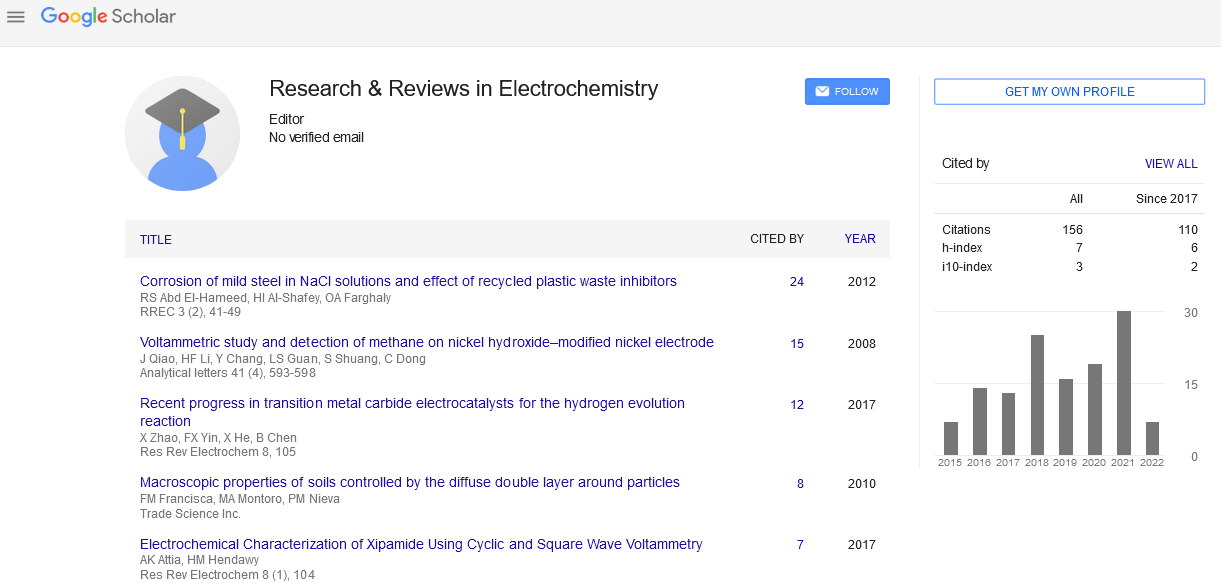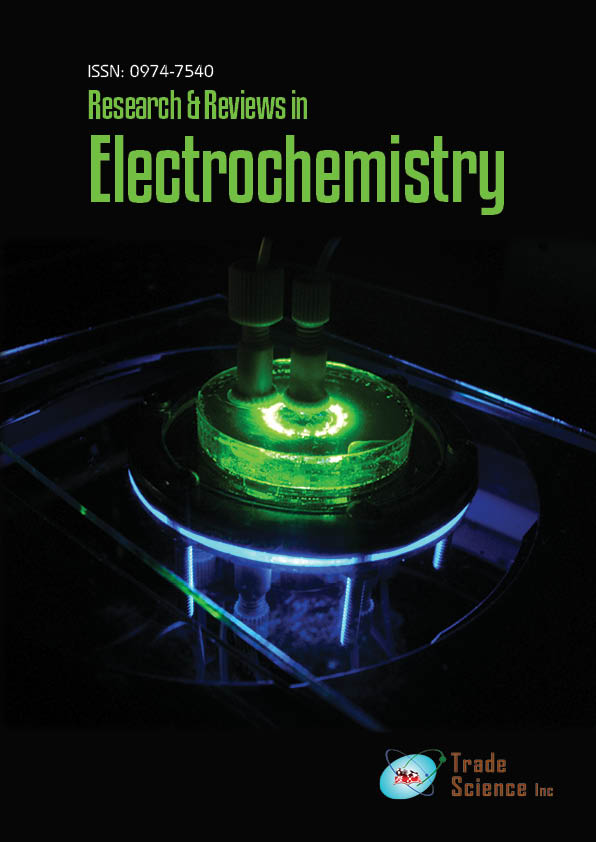Research
, Volume: 11( 1)Low Temperature Conductivity Study of Multi organic Solvent Electrolyte for Lithium-Sulfur Rechargeable Battery Application
- *Correspondence:
- Maziar Bashuri
Department of Chemistry, 57 Ullswater Avenue West End Southampton Hampshire UKS018 3QS
E-mail: publisher@tsijournals.com
Received: January 10, 2021 Accepted: February 05, 2021; Published: February 07, 2021
Abstract
Over a wide temperature range of 40°C to 60°C, the conductivity of an electrolyte plays a crucial role in determining the performance of any battery. The conductivity of lithium bis(rifluoromethanesulfonyl)imide (LiTFSI) in a multisolvent organic electrolyte system at various salt concentrations ranging from 0.2 M to 2.0 M is reported in this study across a temperature range of 40°C to 60°C. In an experimental research done over a wide temperature range, the maximum conductivity was obtained at salt concentrations ranging from 1.0 M to 1.4 M for equal molar solvents. The optimum salt amount and maximum conductivity in a specific solvent composition ratio (i.e., 3 : 2 : 1) are reported for all temperatures. The conductivity of the salt concentration as a function of temperature did not suit the Arrhenius plot, but it resembled the Vogel–Tamman–Fulcher plot behaviour. The purpose of this conductivity investigation was to determine the electrolyte's overall operational temperature limit in a lithium-sulfur battery.
Keywords
Conductivity; bis(rifluromethanesulfonyl)imide; multisolvent
Introduction
Due to its high theoretical capacity (1,675 mAh/g) and specific energy (2,600 Wh/kg) which is up to three times higher than that of commercially feasible Li ion batteries, lithium-sulfur batteries have become an interesting alternative for new-generation highperformance batteries. The batteries, however, are far from ideal due to quick capacity attenuation as well as poor cycle and rate performance. Multi solvent organic-based electrolytes for lithium-sulfur batteries have been documented in extensive literature surveys and earlier experimental research at ambient temperatures, however there has been little study on subambient temperature behaviour of the electrolyte. Temperatures of 40°C to 60°C are required for lithium-sulfur batteries to function properly in telemetry applications. One of the most crucial variables to consider when formulating an electrolyte is conductivity. When electrolytes are made with a multisolvent system, they have higher conductivity across a wider temperature range than when they are made with a single electrolyte system. The composition of the electrolyte determines its physicochemical qualities, such as viscosity, conductivity, thermal stability, and wetability. The electrolyte has long been blamed for a battery's poor performance at low temperatures. Researchers have found that adding lower melting cosolvents to an electrolyte for subambient applications has been the most successful strategy so far. Organic electrolytes containing salt, Lithium bis(trifluoromethanesulfonyl)imide (Li (CF3SO2 )2N), and a mixture of cyclic or linear ethers as solvents, such as 1,3-dioxolane, 1,2-dimethoxyethane, and tetraethylene glycol dimethyl ether, are commonly reported and used for lithium-sulfur batteries due to their good thermal and hydrolytic stability. The large donor number and dielectric constant (r) of 7.9 in the glyme structure of TEGDME aid in the dissociation of lithium salt and active sulphur compounds .The conductivity of the electrolyte at different temperatures and concentrations. As the salt concentration grew from 1.0 M to 1.4 M, the conductivity of the electrolyte increased. It rapidly dropped after that, which might be attributed to the connection of Li ions and N ions with the solvent molecules, resulting in the creation of solvated ion pair complexes.The drop in conductivity could be due to the creation of solvated ion pair complexes. Over a wide electrochemical process. The conductivity is reduced as the salt concentration is increased due to a higher steric interaction in the salt-salt ion interaction. A further experiment was undertaken to discover the optimum salt concentration ranging from 1.0 M to 1.4 M in a variable solvent volume ratio to better understand the shifting conductivity maxima and optimise the solvent composition. The TEGDME solvent composition may have contributed to the minute changes in conductivity between different salt concentrations and the maximum value. This is demonstrated by lowering the TEGDME solvent content in the electrolyte. The organic electrolyte's impedance is normally low at low salt concentrations (1.0 M), although it varies greatly depending on a variety of conditions. At each frequency, the impedance value was determined over a wide temperature range The greatest conductivity was seen at an optimum LiTFSI salt concentration of 1.0 M to 1.4 M over a temperature range of 40°C to 60°C in a temperature investigation for the multiorganic solvent-based electrolyte system. Despite the wide temperature range, the reported optimal salt concentration during the change in solvent volume ratio was 1.05 M. For all temperatures, the system's results did not follow the Arrhenius equation, but they did appear to follow the Vogel–Tamman–Fulcher trend. Overall, the operating temperature limit of the electrolyte was investigated and reported for the corresponding conductivity and optimal salt concentration. Feasibility in the S-EOAP of RS-SiC was primarily validated in this study. The results indicated that through controlling the electrochemical oxidation rate of RS-SiC substrate and the frictional removal rate of the oxide layer, the high MRR and smooth surface quality could be obtained simultaneously. During the 8 groups of experiments, when the oxidation potential, concentration of the ceria slurry, and polishing load were 10 V, 0.1 wt %, and 100 g, respectively, which indicated a high electrochemical oxidation rate and a high removal rate, high MRR would be realized and smooth surface roughness RMS 4.416 nm was obtained in the experiment 6. Meanwhile, when the oxidation rate of RS-SiC substrate was equal to the removal rate of oxide layer, there would be no residual oxide on the polished surface. Furthermore, there would be few scratches, cracks, subsurface damages, residual stresses on the optimal processed RS-SiC samples in S-EOAP. From this study it could be concluded that S-EOAP was an efficient method to process RS-SiC. The research on the S-EOAP of RS-SiC can improve the process level of RS-SiC samples and promote the application of RS-SiC products in the optical and ceramic fields.temperature range, a maximum conductivity value was obtained in the LiTFSI salt concentration range of 1.0 M to 1.4 M.

